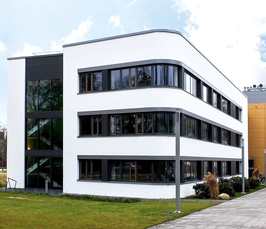Subsystem- and material-resolved view of nonequilibrium states innanostructured metal/2D semiconductor heterostructures
- PC Online Talk
- Date: Aug 6, 2020
- Time: 03:00 PM (Local Time Germany)
- Speaker: Dr. Tommaso Pincelli
- FHI PC Department

We use trARPES to detect the non-equilibrium charge-carrier population, while with analysis of FED diffraction patterns we single out phonon dynamics. The heterostructure is composed of Au nanoislands, grown epitaxially on single-crystalline, bulk WSe2. The epitaxial relationship between the atoms of the metal and the semiconductor is reflected on the electronic band structure and the diffraction pattern and it allows material-resolved trARPES and FED measurements. Exploiting the surface sensitivity of electron-based techniques, we restrict the probed area to the active interface, and by choosing different pump wavelengths we control the excitation of the semiconductor. Surface decoration of WSe2 with Au is found to cause a significant shortening of the excitons’ lifetime and accelerated lattice heating, which is a strong indication of chargetransfer towards Au. Moreover, Au sensitizes WSe2 to sub-band-gap photons, allowing to observe non-equilibrium phonon populations in WSe2 when the pump wavelength is longer than the semiconductor absorption threshold. The corresponding lattice heating follows a nonlinear relationship with the incident laser fluence, which can be attributed to plasmonically enhanced phonon excitation.
Join Zoom Meeting
https://zoom.us/j/91694486931?pwd=a0RRTlduMnVCdnVpNHFHRFpmUEY1QT09 Meeting
ID: 916 9448 6931
Passcode: 977622